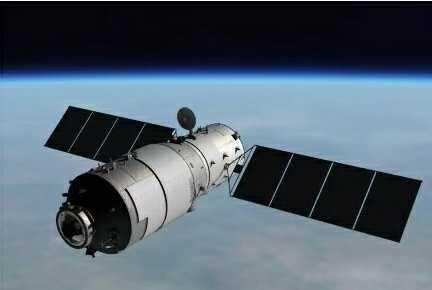China’s ‘Heavenly Palace’ space station will crash in the next few weeks
The latest calculations from space scientists have given us a more precise window as to when the Chinese space station Tiangong-1 will enter the Earth's atmosphere and break apart. Some debris may even make it to the ground, but where that might be is still anybody's guess.
According to The Guardian, the European Space Agency (ESA) is predicting a re-entry date between March 27 and April 8. The orbit of the "Heavenly Palace" means any debris will land in an area stretching from 43 degrees north to 43 degrees south, which rules out Canada, France, and England, but includes most of the U.S. and all of the Middle East, Africa, and Australia.
Without details on the space station's construction, Western analysts can't say with any certainty how much of the spacecraft will survive the fiery re-entry. “To make any sensible statement about what will survive, we’d need to know what’s inside,” said Stijn Lemmens of the ESA. “But the only ones who know what’s onboard Tiangong-1, or even what it’s made of, are the Chinese space agency.”
Space agencies from several nations will be using the latest tracking tools including radar and optical telescopes during the next few weeks for more accurate predictions. It's now at an altitude of 150 miles and traveling at 18,000 mph.
Launched in 2011 in an effort to compete with the U.S. and Russia, the spacecraft was decommissioned in 2016, and China notified the UN that it would likely break apart and fall to Earth sometime in 2017 or 2018. Now we have a better prediction of when the “Heavenly Palace” may come crashing down. Aerospace.org projects that reentry will occur in March 2018.
In October, Harvard astrophysicist Jonathan McDowell told The Guardian, “Now that [its] perigee is below 300 km and it is in denser atmosphere, the rate of decay is getting higher." As such, McDowell estimated that the spacecraft would come down somewhere between October 2017 and April 2018.
It’s unlikely that the remnants of the Tiangong-1 will land in a populated area, with most of the Earth covered by water and huge tracts of uninhabited land. However, chunks of debris as large as 60 pounds are expected to make it through re-entry and to the planet’s surface.
What should you do if pieces of the space station crash-land in your neighborhood? Don’t mess with it, says The Aerospace Corporation: "For your safety, do not touch any debris you may find on the ground nor inhale vapors it may emit." That said, you should certainly let the Aerospace Corporation know if you see the aircraft's reentry this spring.
At 10.4 meters long and nearly 8.75 tons, Tiangong-1 served as a testbed for a variety of critical systems, such as life support. It also docked with the Shenzhou-8, Shenzhou-9, and Shenzhou-10 spacecrafts and performed a variety of other tasks during its four-and-a-half-year lifespan, some two years longer than initially anticipated.
Tiangong-1 was replaced by Tiangong-2. The new station will house two Chinese astronauts for up to a month, with further tests on life support systems and "scientific research." One of those tests is an atomic clock, which scientists want to use to determine if the effects of gravity increase the accuracy of the timepiece, according to news reports.
But even Tiagong-2 won't stay in orbit very long. That station, too, will fall to Earth in an uncontrolled manner, likely soon before the final version of the station launches sometime in the 2020s. 